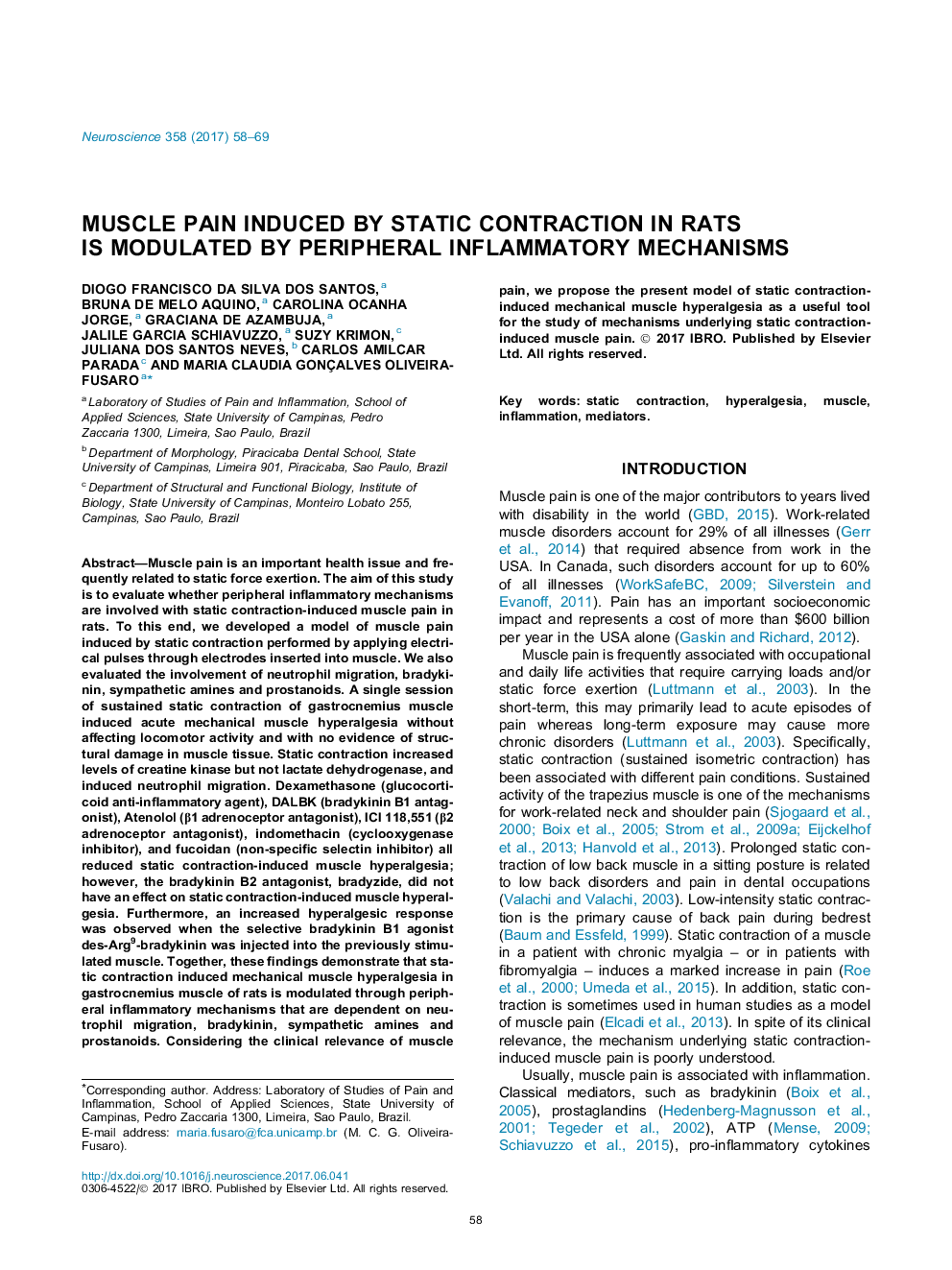| کد مقاله | کد نشریه | سال انتشار | مقاله انگلیسی | نسخه تمام متن |
|---|---|---|---|---|
| 5737643 | 1614718 | 2017 | 12 صفحه PDF | دانلود رایگان |
- A single session of sustained static contraction of gastrocnemius muscle induced mechanical muscle hyperalgesia.
- Sustained static contraction did not induce structural damage to muscle tissue or affected locomotor activity.
- Sustained static contraction increased levels of creatine kinase and neutrophil migration to gastrocnemius muscle.
- Static contraction-induced muscle hyperalgesia is modulated by bradykinin, neutrophils, sympathetic amines and prostanoids.
Muscle pain is an important health issue and frequently related to static force exertion. The aim of this study is to evaluate whether peripheral inflammatory mechanisms are involved with static contraction-induced muscle pain in rats. To this end, we developed a model of muscle pain induced by static contraction performed by applying electrical pulses through electrodes inserted into muscle. We also evaluated the involvement of neutrophil migration, bradykinin, sympathetic amines and prostanoids. A single session of sustained static contraction of gastrocnemius muscle induced acute mechanical muscle hyperalgesia without affecting locomotor activity and with no evidence of structural damage in muscle tissue. Static contraction increased levels of creatine kinase but not lactate dehydrogenase, and induced neutrophil migration. Dexamethasone (glucocorticoid anti-inflammatory agent), DALBK (bradykinin B1 antagonist), Atenolol (β1 adrenoceptor antagonist), ICI 118,551 (β2 adrenoceptor antagonist), indomethacin (cyclooxygenase inhibitor), and fucoidan (non-specific selectin inhibitor) all reduced static contraction-induced muscle hyperalgesia; however, the bradykinin B2 antagonist, bradyzide, did not have an effect on static contraction-induced muscle hyperalgesia. Furthermore, an increased hyperalgesic response was observed when the selective bradykinin B1 agonist des-Arg9-bradykinin was injected into the previously stimulated muscle. Together, these findings demonstrate that static contraction induced mechanical muscle hyperalgesia in gastrocnemius muscle of rats is modulated through peripheral inflammatory mechanisms that are dependent on neutrophil migration, bradykinin, sympathetic amines and prostanoids. Considering the clinical relevance of muscle pain, we propose the present model of static contraction-induced mechanical muscle hyperalgesia as a useful tool for the study of mechanisms underlying static contraction-induced muscle pain.
Journal: Neuroscience - Volume 358, 1 September 2017, Pages 58-69
